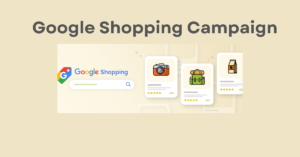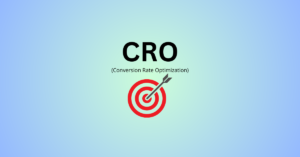In today’s digital-first world, blogging has become a powerful tool for businesses to connect with their target audience, boost brand visibility, and drive traffic to their websites. A well-crafted business blog can showcase expertise, build trust, and even convert readers into customers. However, to make your business blog successful, it requires a strategic approach and a clear focus on delivering value to your audience.
In this blog, we will explore essential tips for creating and maintaining a successful business blog that drives results.
Why Blogging is Crucial for Business Success-
Before diving into tips, let’s quickly review why blogging is a vital part of your business’s marketing strategy:
1. Improves SEO: Consistently publishing valuable content improves your website’s search engine ranking, making it easier for potential customers to find you.
2. Establishes Authority: A blog can position your business as an industry expert by offering insights, tips, and solutions.
3. Generates Leads: Quality blog content can attract potential customers and guide them through your sales funnel.
4. Builds Trust and Relationships: Regular blog updates help build relationships with readers by providing them with helpful information, which can increase brand loyalty.
5. Drives Website Traffic: Compelling blog content can drive organic traffic to your website, increasing the chance of conversions.
Tips for Blogging Success-
1. Understand Your Audience;
The foundation of a successful business blog is knowing your audience. What challenges do they face? What questions are they asking? Your blog content should directly address their pain points and provide solutions that resonate with them. Understanding your audience’s preferences will help you create relevant and engaging content that keeps them coming back.
Tip: Use tools like Google Analytics, social media insights, and customer surveys to gather data on your audience’s interests and behavior. Tailor your content accordingly to meet their needs.
2. Create a Content Strategy;
A random, unfocused approach to blogging won’t deliver long-term results. To be effective, you need a clear content strategy that aligns with your business goals. Your content strategy should outline:
– Target audience: Who are you writing for?
– Goals: What do you want to achieve with your blog? (e.g., increasing website traffic, generating leads, or building brand authority)
– Content types: What kind of posts will you publish? (e.g., how-tos, listicles, case studies, or industry news)
– Posting frequency: How often will you publish new content?
Tip: Develop an editorial calendar to plan and schedule your posts ahead of time. This will keep you consistent and ensure a steady stream of fresh content.
3. Focus on Quality, Not Quantity;
While consistency is important, the quality of your blog content is even more crucial. High-quality content provides real value to your readers and is more likely to be shared, linked to, and ranked by search engines. Each blog post should be well-researched, informative, and professionally written to reflect the quality of your business.
Tip: Take the time to craft well-thought-out blog posts that offer actionable insights. Avoid the temptation to churn out frequent, shallow posts just to meet a quota.
4. Optimize for SEO;
Search engine optimization (SEO) is key to ensuring your blog reaches a wider audience. Incorporating SEO best practices can help your blog rank higher on search engine results pages (SERPs), driving organic traffic to your website.
Key SEO Tips:
– Use Relevant Keywords: Research and include keywords that your target audience is likely searching for.
– Write Attention-Grabbing Headlines: Your headline is the first thing people see. It should be compelling and include a keyword for SEO.
– Optimize Meta Descriptions: A meta description summarizes your post and should also include your primary keyword.
– Use Internal and External Links: Link to relevant internal pages on your website and authoritative external sources to enhance your content’s credibility.
– Optimize for Mobile: Ensure your blog is mobile-friendly since a significant portion of web traffic comes from mobile devices.
5. Engage Your Readers;
Your blog should be more than just a one-way communication tool. Encourage reader engagement by making your blog interactive. Engaging readers can boost your blog’s visibility and create a sense of community around your business.
Ways to Engage Your Readers:
– Ask Questions: Pose questions at the end of your blog posts to invite comments and feedback.
– Include a Call-to-Action (CTA): Whether it’s subscribing to a newsletter, sharing the post on social media, or visiting a product page, include clear CTAs to guide readers to the next step.
– Encourage Comments: Reply to comments and questions to foster conversation and show that you value your readers’ input.
6. Promote Your Blog;
Even the most well-written blog posts won’t have an impact if no one sees them. Promoting your blog is critical to driving traffic and increasing its visibility. Share your blog posts across multiple channels to reach a broader audience.
Promotion Strategies:
– Social Media: Share your blog posts on platforms like Facebook, LinkedIn, Twitter, and Instagram to attract readers from your social media following.
– Email Marketing: Send your latest blog posts to your email list to keep your subscribers engaged.
– Collaborate with Influencers: Partner with industry influencers to share your blog content with their followers.
– Guest Blogging: Write guest posts for other reputable websites and link back to your blog to boost your visibility.
7. Measure and Improve;
Tracking the performance of your blog is crucial for ongoing success. Use analytics tools to monitor key metrics such as:
– Page Views: How many people are reading your blog?
– Bounce Rate: How long are readers staying on your blog?
– Conversions: How many readers are converting into leads or customers?
– Social Shares: How many times is your content being shared across social media platforms?
Regularly analyze these metrics to identify what’s working and where improvements can be made. For instance, if certain types of posts receive more engagement, create more of that content.
Tip: Use tools like Google Analytics, SEMrush, or Ahrefs to track your blog’s performance.
8. Consistency is Key;
Success in blogging doesn’t happen overnight. It takes time to build an audience and establish your blog as a go-to resource in your industry. Consistent posting is crucial for maintaining visibility and keeping your readers engaged.
Tip: Stick to a regular posting schedule that works for your business. Whether it’s once a week or bi-weekly, the key is to maintain consistency over time.




